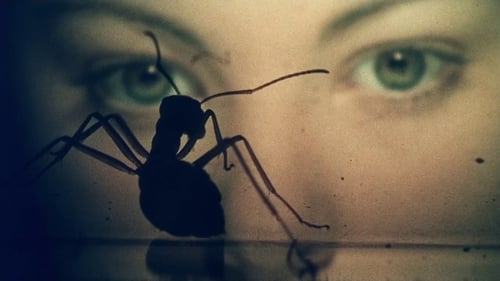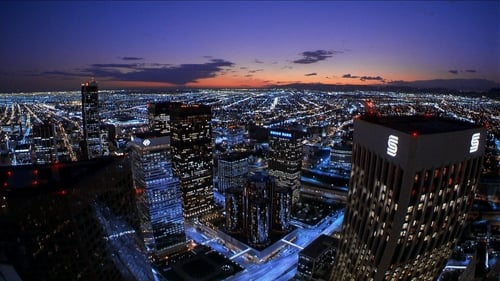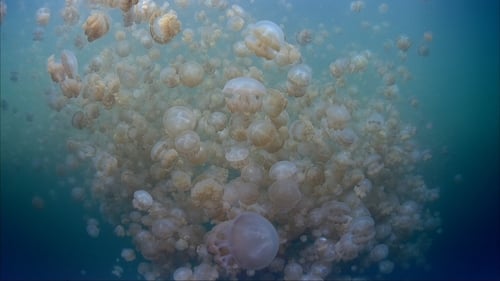Demolishing and Building Up the Star Theatre (1901)
Жанр : документальный
Время выполнения : 3М
Директор : Frederick S. Armitage
Краткое содержание
Time-lapse photography showing the one month-long demolition of the Star Theatre in New York.

Coral reefs are the nursery for all life in the oceans, a remarkable ecosystem that sustains us. Yet with carbon emissions warming the seas, a phenomenon called “coral bleaching”—a sign of mass coral death—has been accelerating around the world, and the public has no idea of the scale or implication of the catastrophe silently raging underwater.

Закончив учебу в Гарварде, Сэм и его подруга Алекс отправляются в Лос-Анджелес, чтобы заняться научной работой в доме матери Сэма — Джейн, которая должна быть в отъезде. Но их ждет не очень приятный сюрприз: Джейн дома, более того — она приютила рок-группу, от которой пытается получить новый хит для своей звукозаписывающей компании. Вольный нрав Джейн и ее отвязной тусовки смущает и раздражает «правильного» Сэма, а вскоре его жизнь и вовсе превращается в хаос, когда он замечает, что Алекс больше нравится компания Джейн и шумные вечеринки, чем ее диссертация о жизни насекомых…

Пустынные муравьи, у которых внезапно обнаружился, мощный коллективный разум, начинают нападать на людей. Двое учёных и девушка, которую удалось отбить у муравьёв, должны остановить взбесившихся насекомых.

See the earliest creatures of the Triassic Period to the monsters of the Cretaceous in a ‘life-sized’ IMAX ® presentation. Join renowned paleontologists as they discover new fossils and uncover evidence that dinosaur descendants are still among us. Realistic and scientifically-accurate computer generated animation brings dinosaurs back to life…in a big way!

Это грандиозный документальный фильм, снят для стандарта кинотеатров IMAX, а значит помимо шикарных кадров содержит еще потрясающую музыку. Фильм и музыка о человечестве, и об его основной динамической составляющей — времени. В фильме запечатлены величайшие творения природы и человека на протяжении веков. От Гранд-каньона до пирамид долины Гиза, от древних храмов инков до Софийского собора. Показана динамика изменения человеческого бытия на фоне этих грандиозных хранителей неизменного течения времени.

Фильм повествует о неизведанных просторах океана, такого близкого нам, но столь еще скрытого от нашего познания. Красоту морских панорам дополнит музыка Стинга и голос несравненной Мерил Стрип.

Time-lapse photography showing the one month-long demolition of the Star Theatre in New York.

A feature-length documentary showing the changing world of nature, the sky, the sea, the sun, planets, insects and volcanic action. A story of nature's strange and intricate designs for survival and her many methods of perpetuating life.

"Percy Smith (1880-1944) was world famous as a photographer of plant life. Probably the first British example of time-lapse photography as applied to the growth of plants." Monthly Film Bulletin, November 1955.

This documentary follows 200 days in the life of contemporary artist Hiroshi Sugimoto— a leading presence in the world of modern art. He is the winner of many prestigious awards and his photographs are sold for millions of yen at overseas auctions. The film shows the sites of the Architecture series shot in southern France, the huge installation art work at 17th Biennale of Sydney, his new work Mathematics at Provence, his art studio while working on Lightning Fields, and more. It thoroughly pursues the question Sugimoto's works pose - "living in modern times, what are these works trying to tell us?" A thrilling look into the world of Hiroshi Sugimoto.

Time lapse documentary about the lifecycle of flowers.

High speed film and time-lapse photography combined to create breathtaking images of the night sky and Halley's Comet in this astronomical short subject. Currently lost media.

'Uit het rijk der kristallen' is one of several scientific films made by J.C. Mol. In the film, the crystallization processes of various chemicals are shown. There are different versions of Uit het rijk der kristallen: the original silent film was given a soundtrack in the 1930s, and there is a colour version of the film which was made using Dufay colour. A clip from the film, or other shots of identical crystallization processes, can be seen in Mol’s other films. The film was not only screened at educational and scientific presentations, but also resonated within avant-garde circles. The film was screened at the first show presented by the Harlem branch of the Filmliga. This was followed by a screening at Amsterdam’s Filmliga, and at ‘Studio 28’ in Paris. There, the film was screened as a ‘triptyque’, with three projectors side by side.


Если бы не серия катаклизмов, начатая падением метеорита, наша планета до сих пор могла бы быть населена динозаврами. Вслед за профессором Рудольфо Гориа, всемирно известным Аргентинским палеонтологом, зритель посетит места его важнейших открытий в Патагонии и вернется назад во времени, чтобы увидеть рождение этих невероятных созданий. Патагония подарила нам самое большое живое существо, когда-либо бродившее по Земле — огромного травоядного Аргентинозавра, а также и его врага Гигантозавра, двуногого хищника, который легко поспорит со знаменитым Т-Рексом.

«По течению» снимается на арктическом острове Шпицберген и в Норвегии. Он сочетает в себе замедленную съемку с анимацией ландшафта в режиме остановки движения. Под углом камеры и кадрированием пленка постепенно смещает зрителя со стабильной основы, где человек теряет ощущение масштаба и заземления.

A poetic reflection on the passing of time and youth.

140 seconds of 780 stills taken from a window in a dormitory.

An exciting video journey through the world of time-lapse photography by one of the founders of the science of photobiology, Dr. John Nash Ott. Do fluorescent lights cause cancer and childhood learning and behavior disorders? Can long-term exposure to low-level radiation as from TV sets, computers, fluorescent lights, and similar devices harm you? Does living behind window glass and with glasses covering our eyes over years affect our health? Is natural sunlight and trace ultra-violet radiation really harmful? Or is it necessary and beneficial? How do cells, plants, and animals respond to constant exposure to different light color frequencies? These and similar questions were the subjects of Dr. Ott's pioneering investigations in the field of photobiology, using the methods of time-lapse photography.

Dealing heavily with perceptions of time, Aeon documents the urban cityscape as Wellington transforms through a zen-influenced eternal cycle of birth, life, death and rebirth within a 24-hour period.










